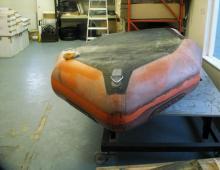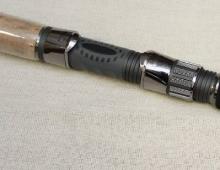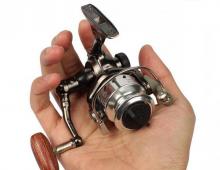Imitated caviar: what it is made of, benefits and harms. How to distinguish natural caviar from artificial
Imitated caviar is a high-quality fake of natural caviar. The product is harmless if it does not contain synthetic dyes. Artificial caviar is attractive not only externally, but also due to its low cost. Until now, there is a myth that the product is made from oil. But this is absolutely not true.
Synthetic caviar: history of appearance
Back in the days of the Soviet Union, real caviar was very expensive. As a result, the dissatisfaction of people who do not have the opportunity to purchase a delicacy began to grow. And scientists began to work on creating an imitation of caviar. The first batches were made from real protein. Among the ingredients were food additives, chicken eggs and vegetable oil.
But such artificial caviar was rather tasteless and looked very remotely like the real one. Over time, new manufacturing technologies have appeared. The method of creating caviar using gelatin began to be used. In such recipes, in addition to it, there are milk, algae extracts, protein supplements, etc. This technology is called "protein" and is now considered obsolete.
There are other manufacturing methods that do not involve protein substances or only in small volumes. In any case, the final product began to be called imitated by copying the appearance of natural.
What is artificial caviar made of?
What is imitation red caviar made of? Compositions that used a protein component have long gone. Thanks to her, the eggs acquired the necessary density. The compositions of the modern product contain gelling agents. Extracts of brown and red algae and agar are used as thickeners). They allow not only to achieve a consistency similar to real caviar, but also reduce the calorie content of the product.
Red and black caviar acquires color due to natural dyes. It's paprika and vegetable charcoal. But sometimes artificial dyes are used. A constant ingredient in imitated caviar is fish meat, broth and fat. Thanks to them, the necessary taste and aroma appears.

How is artificial caviar made?
Imitated red and black caviar is produced using different technologies:
- protein method. First, a special mixture was made, which included egg white, culinary dressing and dye. Then a drop of such a mass fell into a heated water-oil emulsion or vegetable oil. The protein folded and a ball formed, outwardly resembling a caviar. It had a dense structure. It was possible to give the product any color and taste. To increase the shelf life, such simulated caviar was pasteurized.
- gelatin method. This method allows you to get simulated caviar from various protein fillers: milk, soybeans, etc. They are mixed with gelatin, and the resulting mixture is heated. Then it is injected into vegetable oil with a temperature of 5 to 15 degrees. Caviar is produced in special columnar installations. The taste of the product is given by crushed herring.
- seaweed method. This method differs from the two protein methods described above. Until recently, it was considered the most promising, but more convenient and modern technologies have already appeared.
Types and appearance
Imitated caviar is commercially available in a variety of forms. They differ in the raw materials used, recipes and method of manufacture.

Protein caviar is obtained on the basis of gelatin and is a ball in which there is a homogeneous content. This is a white or beige kernel with a dark colored shell. It is fragile and allows moisture to pass into the core and back. Because of this, the eggs do not have a stable structure.
Such a product differs from other types in good taste, color and composition and is most suitable for sturgeon caviar. The plastic structure allows you to imitate a spatula and crushed balls, to get a bursting effect in your mouth.
Artificial caviar, which is made using modern technologies, is very similar to natural caviar from fish of different breeds. The appearance and taste of the product are as close to natural as possible.

Benefit and harm
Imitated caviar has been in great demand for a long time. The benefits and harms of this product are as follows:
- Gelling agents reduce the calorie content of the product, but at the same time increase its satiety due to swelling granules. For those who are on a diet, this is a good option. However, there is also an opposite side. Imitated caviar contains a lot of salt, so the body can be disturbed. And this leads to swelling and difficulties in removing toxins and toxins.
- Fatty acid and Omega-3s provide benefits. These components help to maintain the youthfulness of the body, strengthen the immune system and make cells fight cancer. This increases the useful properties of the product.
- The controversial components of artificial caviar are lactic and citric acids. Most often they do not cause allergies, but itching, irritation and rashes can still occur in some consumers. The most active of the acids is lactic acid. Its excess can lead to disruption of the nervous system and deterioration of muscle activity.
How to distinguish between real and artificial caviar?
How to distinguish natural caviar from artificial? There are several ways. The simplest - in terms of taste. Imitated is always more salty and gives flavors. Granules of natural caviar, bursting, leave moisture and taste of salt on the tongue. There will also be a slight fishy smell.

You can distinguish natural caviar from simulated caviar using boiling water. Hot liquid is poured into a glass. Several eggs fall into it. Real caviar will not dissolve, but will only turn pale.
High-quality analogues of real caviar
Imitated sturgeon caviar is produced using a new technology. As a result, the finished product has improved taste. The color has become closer to natural sturgeon caviar. The structure of the simulated product has acquired plasticity. This allows you to feel how the eggs burst in your mouth. Only a natural product has such an effect.
New types of caviar are made in the form of pressed or granular. With previous technologies, this was not possible. The composition of the new type of simulated caviar partially includes hydrobionts, real caviar and sturgeon meat. The product is manufactured on special equipment. As a result, artificial caviar acquires many shades that are characteristic only of natural sturgeon.

Choice
Imitated red caviar can be dyed not with natural dyes, but with synthetic ones. Each product packaging must indicate the composition. It notes which baptizers were used in the manufacture.
Caviar with butter cream is in great demand. But all supplements are made from chemicals. "Butter cream" in caviar is made from water, flavors, fats and flavor enhancers. All these components are harmful to the body. When choosing caviar, it is best to purchase a homogeneous one.
When buying, consumers often try to take the product in glass containers. But caviar is perfectly stored in polyethylene. Therefore, there is simply an overpayment for packaging. But you need to pay attention that there are no voids and liquid under the film. Artificial caviar should not be hard, but just dense.
Storage
The product should only be stored in the refrigerator. Expiration dates are always written on the packages. But artificial caviar in an open container can be stored even in the refrigerator for no more than twelve hours.

Is it possible to make caviar by yourself?
Imitated caviar can be prepared even at home. This will require:
- gelatin (it can be replaced with semolina in the amount of 200 g);
- 500 g of salted herring (can be replaced with other fish);
- 200 ml of tomato juice;
- 200 ml sunflower oil;
- 4 heads of onions.
Cooking method
Tomato juice and oil are mixed in a saucepan and brought to a boil. Then semolina is added there. To avoid the appearance of lumps, the cereal is constantly stirred. The mixture is boiled for 7 minutes, then removed from heat and cooled. At this time, the fish is cleaned and ground through a meat grinder (without bones). The skin is removed from the onion. Then the heads are also passed through a meat grinder.
It turns out minced fish, which is thoroughly mixed. The mass is added to the cooled semolina mixture. Everything is thoroughly mixed and infused for 15 minutes. Then the mass is passed through the granulator. As a result, you will get a lot of small eggs, which are painted in the desired color using natural dyes.



